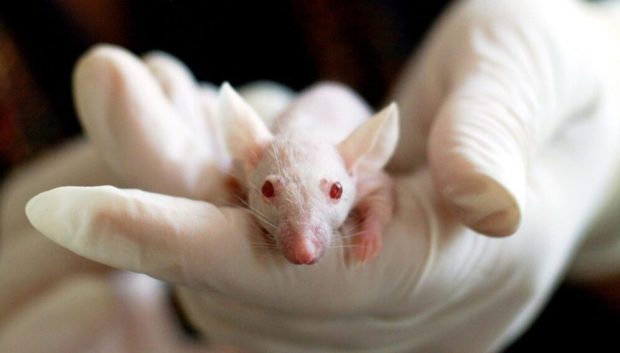
New testing methods can spare laboratory animals

By Crispin Maslog
MANILA: We need to end animal sacrifice at the altar of science. The time has come for the scientific community to free animals from being subjected to cruel research carried out to find cures for human diseases or vanity purposes such as for cosmetics.
Every year, millions of animals are sacrificed worldwide in basic and applied experimentation. One estimate says that more than 115 million animals are used worldwide in experiments in the biomedical industry alone. But the question of animal experimentation’s efficacy and the applicability of findings to humans have been subjected to little systematic scrutiny.
Advocacy groups, like People for the Ethical Treatment of Animals (PETA), say that each year, as many as 100 million animals — mice, rats, frogs, dogs, cats, rabbits, hamsters, guinea pigs, monkeys, fish, and birds — are killed in US laboratories for biology lessons, medical training, curiosity-driven experimentation, and chemical, drug, food, and cosmetics testing.
Animal welfare concerns are gaining traction of late. While a total animal-free science research may take a while, there are now serious moves towards this in Asia. Taiwan’s Vice President William Lai pointed the way with the recent establishment by Taiwan of a task force to establish a centre for the 3Rs (reduction, replacement and refinement) to improve conditions for animal-free research methods such as organ-on-a-chip, 3D tissue culture, computer simulation, and AI algorithmic system technologies
More than 20 countries including Japan, South Korea, Taiwan, the US, the UK and Brazil have already established or are putting up national centres for reduction, replacement and refinement. Meanwhile, Philippine scientists in a formal statement last month called for the humane and ethical treatment of animals in research — be it developing new feeds or vaccines for livestock or studying a species and its interactions with the environment. Malaysia is eyeing to improve its education modules in universities concerning animal welfare and the use of animals.
While scientists contend that animal experiments are crucial for learning basic biology and disease mechanisms and for testing the safety and efficacy of new medicines and chemicals, the findings of such research are not always applicable to humans. More than 95 per cent of animals used in research are mice, rats, birds and fish. And the findings are often misleading because animal research doesn’t always translate to humans. They are different species.
According to some researchers published in The Journal of the American Medical Association, “patients and physicians should remain cautious about extrapolating the finding of prominent animal research to the care of human disease … poor replication of even high-quality animal studies should be expected by those who conduct clinical research”.
Some of the tests used on animals can be horrible and produce a great deal of suffering. Examples include dripping the chemical being tested onto the eyes of rabbits.
To quote PETA: “Before their deaths, some are forced to inhale toxic fumes, others are immobilised in restraint devices for hours, some have holes drilled into their skulls, and others have their skin burned off or their spinal cords crushed…The thinking, feeling animals which are used in experiments are treated like nothing more than disposable laboratory equipment.”
Subjecting animals to experiments for human gain is not only cruel but also ethically unjustified. Advancements in science now allow better alternatives, such as growing human stem cells in dishes and computer modelling. Biologists and animal scientists can now do research on human diseases without using animals and making animals suffer in the process.
A word of caution, however: the vision of animal-free research to benefit humans will come, but not very soon. I talked to former Philippine science minister William Padolina and he says “attempts to duplicate life’s processes in chips still have a long way to go. We still do not know enough of how living systems operate to be able to duplicate the same in digital form”.
Despite the Taiwanese enthusiasm, animals may continue to be sacrificed at the altar of science for some time, but hopefully in less cruel fashion. It will be later rather than sooner that microchip technology animal science will be with us.
Crispin Maslog, a former editor at Agence France-Presse and a science journalist, taught science journalism at Silliman University and the University of the Philippines Los Baños.
This piece was produced by SciDev.Net’s Asia & Pacific desk.


